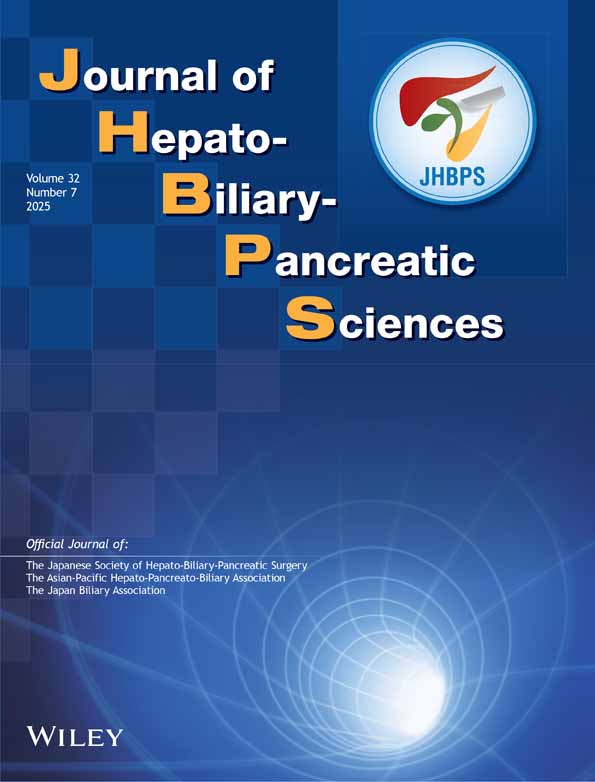A resected case of a small hepatocellular carcinoma developing within the bile duct
Abstract
We experienced a resected case of a small hepatocellular carcinoma, which required differential diagnosis from intrahepatic cholangiocellular carcinoma. The patient was a 76-year-old man. While his course had been being observed because of hepatitis C antibody-positive liver cirrhosis, ultrasonographic examination of the abdomen revealed dilation of biliary branches in the anterior segment of the liver and a hyperechoic mass 10 mm in diameter at the origin of the branch. A dynamic computed tomography scan showed a high-density tumor in the early phase. After embolization of the right branch of the portal vein, resection of the right lobe of the liver and the extrahepatic bile duct was performed. A resected specimen showed a white-colored mass 8 mm in diameter at the origin of the anterior segmental biliary branch. In the pathological findings, the diagnosis was a poorly differentiated hepatocellular carcinoma with strong nuclear atypia; the tumor filled the bile duct, forming a trabecular structure. The immunohistological stains of the tumor were positive for cytokeratin (CK) 8, CK18, and HepParl and negative for alpha-fetoprotein, carcinoembryonic antigen, CA19-9, CK7, CK19, and CK20. There was atypia in the biliary lining epithelium adjacent to the tumor, and the hepatocellular carcinoma may have developed from the biliary epithelium.




